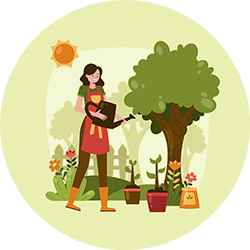How to Naturally Encourage More Bees Into Your Garden

Bees play a vital role in pollination, yet many gardens unintentionally discourage them. By choosing the right plants and practices, you can create a space that naturally attracts and supports these important pollinators. This guide will show you how to encourage more bees into your garden without relying on chemicals or complicated setups.
Plant a variety of bee-friendly flowers
Bees are attracted to a wide range of flower shapes and colors, so variety is key. Choose blooms with single, open faces and a mix of native and non-invasive ornamentals. Grouping the same plant species together in clumps makes foraging more efficient for visiting bees.
Focus on continuous blooming throughout the seasons
Providing nectar and pollen from early spring through late fall helps support bees year-round. Include early bloomers like crocus and lungwort, mid-season flowers such as coneflowers and bee balm, and late-season options like goldenrod and aster. Planning for overlapping bloom periods keeps food available without gaps.
Skip the double blooms
While lush, double blooms often lack nectar and are harder for bees to access. Single-petal varieties are better suited to pollinators and are more nutritious for them. When selecting flowers, check that the centers are visible and accessible.
Provide a fresh water source
Bees need water for hydration and hive cooling, especially in hot weather. Shallow dishes filled with water and flat stones give them a safe place to land and drink. Keep the water clean and refill regularly, especially during dry spells.
Avoid synthetic pesticides and herbicides
Many garden chemicals are toxic to bees and linger on leaves and flowers. Instead, use natural pest control methods such as neem oil or insecticidal soap and apply in the early morning or late evening when bees are less active. Companion planting with herbs like basil or marigold can also help reduce pest issues naturally.
Include flowering herbs and vegetables
Edible plants can do double duty as food for both you and pollinators. Let herbs like thyme, oregano, dill, and basil flower to attract bees. Allowing a few vegetables like arugula or radishes to bolt will also add useful blooms to the garden.
Plant shrubs and trees for shelter and forage
Flowering shrubs provide nectar, pollen, and shelter from wind. Options like spirea, blueberry, elderberry, and ninebark are beneficial additions. Early blooming trees like redbud, apple, and crabapple support bees emerging from winter dormancy.
Create nesting habitat for native bees
Most native bees do not live in hives and instead nest in the ground or in hollow stems. Leave some bare patches of soil undisturbed, and provide bee hotels or bundles of dried plant stalks. Avoid heavy mulching in every area to allow access to ground-nesting sites.
Choose a sunny, sheltered location
Bees are more active in sunny spaces where warmth speeds up their metabolism. Place flowers and nesting structures where they receive several hours of sunlight each day. Protect these areas from strong winds using natural barriers or plantings.
Get to know your local bee species
Observing which bees visit your garden can help tailor your planting choices. Different species have preferences for flower shapes, sizes, and bloom times. Supporting a variety of bees leads to a more resilient garden and a healthier ecosystem.
Conclusion
Creating a bee-friendly garden is a simple yet powerful way to support pollinators and improve your harvests. By planting diverse flowers, providing water, and avoiding chemicals, you invite bees to thrive alongside your plants. Even small changes can make a big difference in building a healthier, more vibrant garden.
